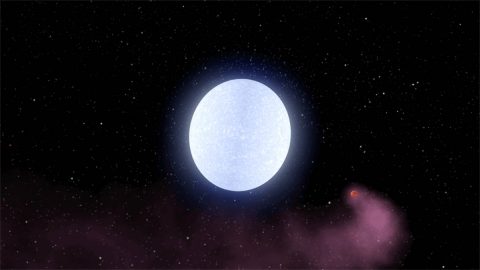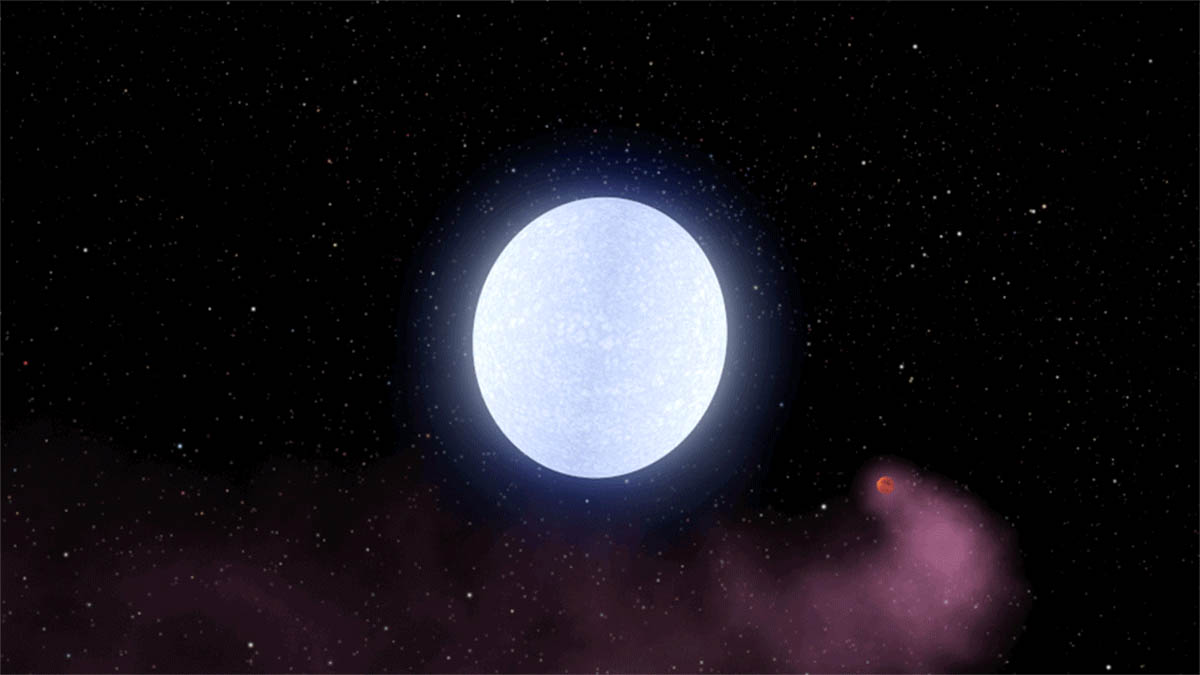 Pasadena, CA – NASA says massive gas giants called “hot Jupiters” – planets that orbit too close to their stars to sustain life – are some of the strangest worlds found beyond our solar system. New observations show that the hottest of them all is stranger still, prone to planetwide meltdowns so severe they tear apart the molecules that make up its atmosphere.
Pasadena, CA – NASA says massive gas giants called “hot Jupiters” – planets that orbit too close to their stars to sustain life – are some of the strangest worlds found beyond our solar system. New observations show that the hottest of them all is stranger still, prone to planetwide meltdowns so severe they tear apart the molecules that make up its atmosphere.
Called KELT-9b, the planet is an ultra-hot Jupiter, one of several varieties of exoplanets – planets around other stars – found in our galaxy. It weighs in at nearly three times the mass of our own Jupiter and orbits a star some 670 light-years away.

With a surface temperature of 7,800 degrees Fahrenheit (4,300 degrees Celsius) – hotter than some stars – this planet is the hottest found so far.
Now, a team of astronomers using NASA’s Spitzer space telescope has found evidence that the heat is too much even for molecules to remain intact.
Molecules of hydrogen gas are likely ripped apart on the dayside of KELT-9b, unable to re-form until their disjointed atoms flow around to the planet’s nightside.
Though still extremely hot, the nightside’s slight cooling is enough to allow hydrogen gas molecules to reform – that is, until they flow back to the dayside, where they’re torn apart all over again.
“This kind of planet is so extreme in temperature, it is a bit separate from a lot of other exoplanets,” said Megan Mansfield, a graduate student at the University of Chicago and lead author of a new paper revealing these findings. “There are some other hot Jupiters and ultra-hot Jupiters that are not quite as hot but still warm enough that this effect should be taking place.”
The findings, published in Astrophysical Journal Letters, showcase the rising sophistication of the technology and analysis needed to probe these very distant worlds. Science is just beginning to peer into the atmospheres of exoplanets, examining the molecular meltdowns of the hottest and brightest.
KELT-9b will stay firmly categorized among the uninhabitable worlds. Astronomers became aware of its extremely hostile environment in 2017, when it was first detected using the Kilodegree Extremely Little Telescope (KELT) system – a combined effort involving observations from two robotic telescopes, one in southern Arizona and one in South Africa.
In the Astrophysical Journal Letters study, the science team used the Spitzer space telescope to parse temperature profiles from this infernal giant. Spitzer, which makes observations in infrared light, can measure subtle variations in heat. Repeated over many hours, these observations allow Spitzer to capture changes in the atmosphere as the planet presents itself in phases while orbiting the star. Different halves of the planet roll into view as it orbits around its star.
That allowed the team to catch a glimpse of the difference between KELT-9b’s dayside and its “night.” In this case, the planet orbits its star so tightly that a “year” – once around the star – takes only 1 1/2 days. That means the planet is tidally locked, presenting one face to its star for all time (as our Moon presents only one face to Earth). On the far side of KELT-9b, nighttime lasts forever.
Computer models are major tools in such investigations, showing how these atmospheres are likely to behave in different temperatures. The best fit for the data from KELT-9b was a model that included hydrogen molecules being torn apart and reassembled, a process known as dissociation and recombination.
“If you don’t account for hydrogen dissociation, you get really fast winds of [37 miles or] 60 kilometers per second,” Mansfield said. “That’s probably not likely.”
KELT-9b turns out not to have huge temperature differences between its day- and nightsides, suggesting heat flow from one to the other. And the “hot spot” on the dayside, which is supposed to be directly under this planet’s star, was shifted away from its expected position. Scientists don’t know why – yet another mystery to be solved on this strange, hot planet.



